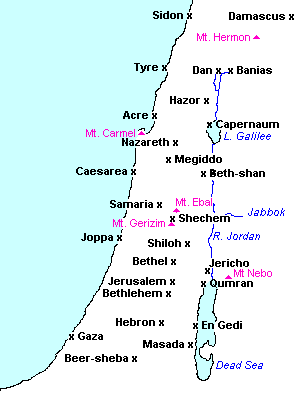Tokyo
St. Paul and "Arabia" or Qumran
How could St. Paul suddenly become a follower of Christ though the Spirit of Jesus appeared to St. Paul on the road to Damascus?
And, how could St. Paul learn about the mission and the deeds of Christ Jesus to the depth and extent that allowed St. Paul to preach the gospel of Christ Jesus to others with such confidence. Who taught St. Paul the life of Christ Jesus, although St. Paul had been a great persecutor of followers of Christ Jesus? Just one appearance of the Spirit of Christ Jesus to St. Paul could not give St. Paul such knowledge about Christ Jesus and confidence in following Christ Jesus. Where and from whom did St. Paul learn about Christ Jesus? It must be in Qumran.
After his conversion, Paul went to Damascus, where Acts 9 states he was healed of his blindness and baptized by Ananias of Damascus.[44] Paul says that it was in Damascus that he barely escaped death.[2 Cor. 11:32] Paul also says that he then went first to Arabia, and then came back to Damascus.[Gal. 1:17][45] Paul's trip to Arabia is not mentioned anywhere else in the Bible, and some suppose he actually traveled to Mount Sinai for meditations in the desert.[46][47] He describes in Galatians how three years after his conversion he went to Jerusalem. There he met James and stayed with Simon Peter for 15 days.[Gal. 1:13-24] Paul located Mount Sinai in Arabia in Galatians 4:24-25.
Paul asserted that he received the Gospel not from man, but directly by "the revelation of Jesus Christ".[Gal 1:11-16]After the miracle on the road to Damascus, St. Paul went to "Arabia" or "Mt. Sinai." He spent there three years. And then, he came to Jerusalem for the first time to see St. James, a brother of Jesus, and St. Peter, the leader of the followers of Christ Jesus in Jerusalem.
https://en.wikipedia.org/wiki/Paul_the_Apostle#Post-conversion
But it was only for 15 days that St. Paul was in Jerusalem to live and talk with St. James and St. Peter. It is not enough for St. Paul to learn about Christ Jesus from the two men. St. Paul must have learnt enough about Christ Jesus in the three years when he was in "Arabia" or "Mt. Sinai." And, the only place St. Paul could learn about Christ Jesus was Qumran, since Jesus had come out of Qumran to the River Jordan to be baptized by Prophet John and Jesus must have returned to Qumran as His mission as Christ Jesus after the Crucifixion and the Resurrection.
Jesus must have written a document today called the Q source, the original source of the Gospels according to Mark, Matthew, Luke and John. St. Paul must have met Jesus or read the document written by Jesus in Qumran, no matter what manner. That is why St. Paul wrote later that he "received the Gospel not from man, but directly by 'the revelation of Jesus Christ'."
And, after his first visit to Jerusalem, St. Paul did not come to Jerusalem to see St. James and St. Peter for 14 years. It means that St. Paul thought that he knew enough about Christ Jesus as much as the two key figures, who had actually seen living Christ Jesus, of followers of Christ Jesus in Jerusalem knew about Christ Jesus. St. Paul did not need to ask questions about Christ Jesus to them. It is because in Qumran St. Paul had met Jesus or read the source document of the Gospels written by Jesus.
The key to understanding the extremely strong confidence that St. Paul thought that he knew Christ Jesus so much that he could start his own mission with such great passion must be his experiences in Qumran which he called "Arabia" for some reason.
Qumran (Hebrew: קומראן; Arabic: خربة قمران Khirbet Qumran) is an archaeological site in the West Bank managed by Israel's Qumran National Park.[1] It is located on a dry plateau about 1.5 km (1 mi) from the northwestern shore of the Dead Sea, near the Israeli settlement and kibbutz of Kalya. The Hellenistic period settlement was constructed during the reign of John Hyrcanus, 134-104 BCE or somewhat later, and was occupied most of the time until it was destroyed by the Romans in 68 CE or shortly after. It is best known as the settlement nearest to the Qumran Caves where the Dead Sea Scrolls were hidden, caves in the sheer desert cliffs and beneath, in the marl terrace.https://en.wikipedia.org/wiki/Qumran

http://www.drshirley.org/geog/map01.html
Damascus and Qumran

http://www.lifeintheholyland.com/views_vanished_david_bivin_1960s.htm
Qumran and the Dead Sea
**** **** ****
Mar 1:25 And Jesus rebuked him, saying, Hold thy peace, and come out of him.
Mar 1:26 And when the unclean spirit had torn him, and cried with a loud voice, he came out of him.
